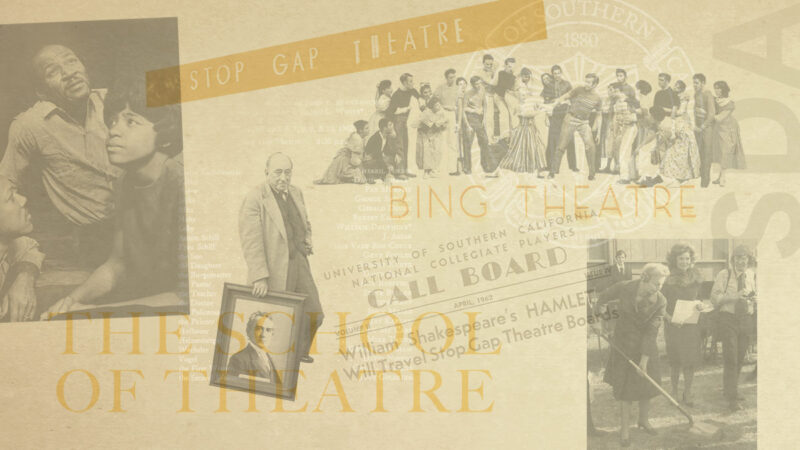When the School of Dramatic Arts embarked on a journey as an official unit at the University of Southern California in 1945, it started out humbly with four faculty members, two productions in a school year, and 15 classes housed mostly in the Old College building.
What kindled all those years ago has grown tenfold: The School now has more than 125 faculty and staff members, at least 20 productions in a given season (plus dozens of student-initiated and -produced shows), and approximately 135 classes that have multiple course offerings per semester in buildings spread to the corners of campus.
To say the least, it’s been an epic adventure, 75 years in the making.
View a timeline of the School of Dramatic Arts’ history.
Powerhouse of Talent
“The School of Dramatic Arts has established a reputation for providing our students with a rigorous grounding in the craft of theatre that is taught by working artists on a campus situated in the entertainment capital of the world,” SDA Dean Emily Roxworthy says.
The School now serves a student population of more than 600, recruiting hundreds of top-tier artists for its programs that are consistently ranked as some of the best in the world.
The impact of its dramatic arts education speaks for itself. The School’s legacy spans the globe through its remarkable alumni and faculty, whose accomplishments have shaped and effected change in the industry. To name a few:
Its history comprises of notable performers. Philip Ahn — one of the most recognized Asian American actors of old Hollywood. Comedy trailblazer John Ritter. LeVar Burton — a champion for childhood literacy for 20 years through his series Reading Rainbow. Award-winning artist and activist Forest Whitaker. Alma Martinez, with her prolific career and research focused on Chicanx and Latin American popular-political theatre.
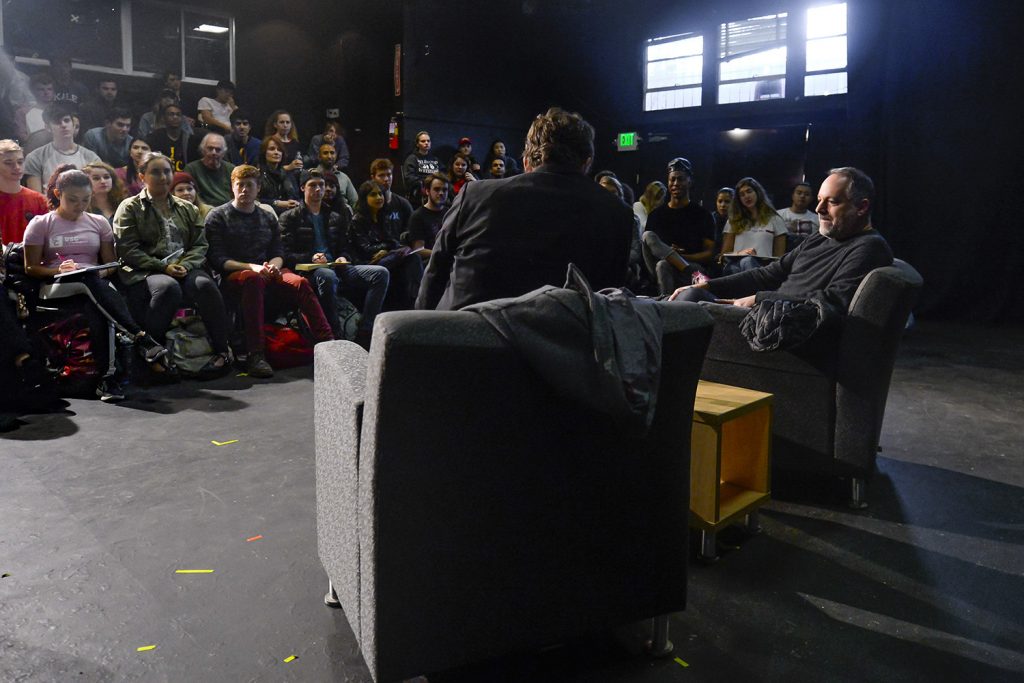
Also, a longtime Trojan presence behind the scenes of the stage and screen. Tim Dang, who served for 23 years as the artistic director of the nation’s longest running professional theatre of color, East West Players. The late scholar, playwright and civil rights activist Endesha Ida Mae Holland on faculty. Grant Heslov and Todd Black, producers of award-winning major motion pictures that include films taking a critical look at issues facing our country.
To list all of the magnates of SDA and their accomplishments would take up an entire magazine of its own, as the number of impactful writers, performers, producers, agents, managers, designers and beyond goes on and on.
Qualities of an SDA Trojan
For alumnus Howard Schmitt MFA ’82, who has been an SDA staff member for 40 years and runs the School’s Costume Shop, the University’s location and the solid network within the Trojan Family have been a common thread for this wealth of talent.
“… becoming a part of the USC identity was how quickly I met, and worked with, USC alums. Within a month of enrolling, I met a couple of grads from the MFA design program, who were working on a TV pilot. The first two summers after coming to USC, I participated in John Blankenchip’s Theatre Festival USA/USC — where I met and worked with alums from the ’70s, ’60s and ’50s. Some of these alums I was still working with more than 25 years later,” he says.
During his first day on campus, Schmitt recalls Duncan Ross, who succeeded John Houseman as the drama division chairman, speaking on “the importance of international culture in Los Angeles as a part of theatre education.” The alumnus adds: “I still remember him commenting on the significance of all the languages that were spoken in Los Angeles — that idea of looking outside of your own world and observing others.”
Perhaps also at the core of this success is the special qualities of the School’s community, an interconnected and collaborative group that have been collectively active, involved and dedicated to SDA. (More than a third of the faculty and staff have served at the School for more than a decade, about a dozen of whom have served more than two.)
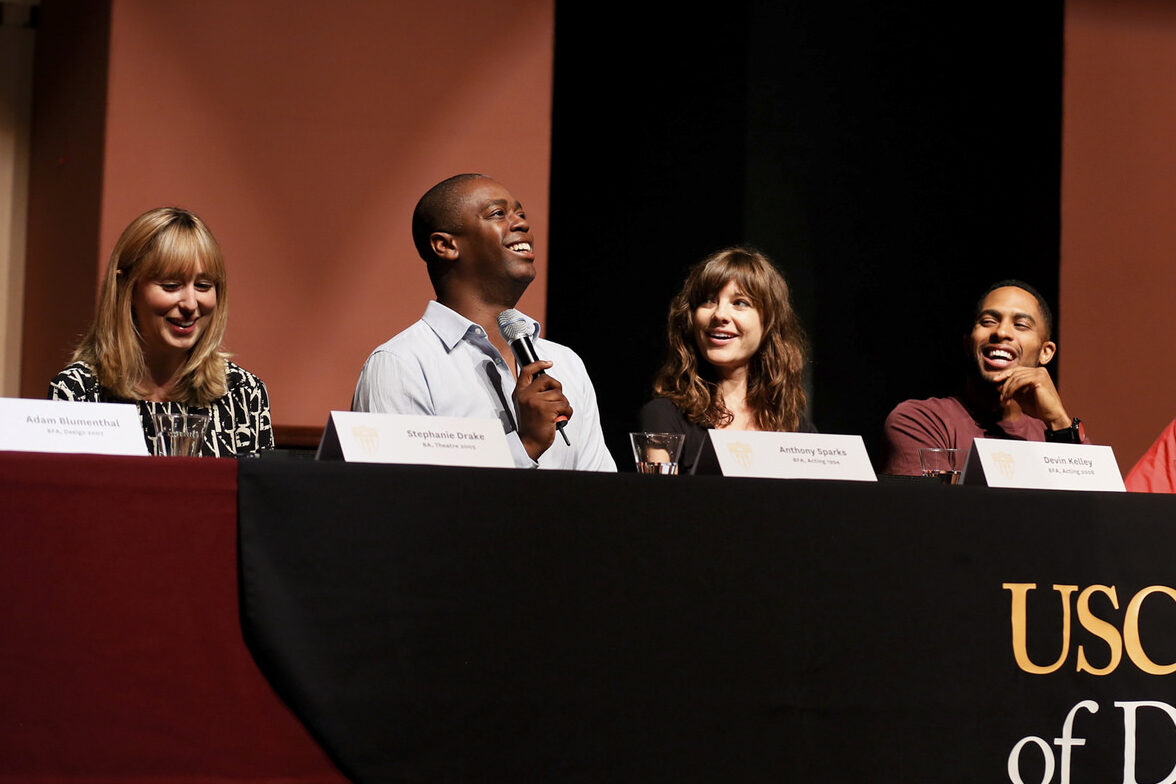
“For me, the most enjoyable part about being a faculty member at USC has been experiencing students’ journeys through higher education. I take pleasure in watching them learn, grow and create; and in being able to refer them to artists who can help them enhance their careers,” USC Distinguished Professor Velina Hasu Houston says.
Houston — who has been on faculty for 30-plus years, and whose roles have included associate dean of faculty, director of MFA Dramatic Writing, head of undergraduate playwriting and resident playwright at SDA — has seen the School’s “ever-evolving” journey since it became an independent school in 1990.
“… [the alumni] leave their educations stimulated and inspired to illuminate their art. That determination and commitment motivates them to express themselves creatively and with enthusiasm,” she adds.
Programs in Spotlight
Along with its community, the School’s programs over the years have had pioneering moments as well. In 1966, USC became the first American university to perform in the international Edinburgh Fringe Festival, the largest arts festival in the world.
Several of the School’s current programs are also paving the way in dramatic arts education. The medical clowning program, which integrates the art of clowning into healthcare and community settings, partners with top hospitals in Southern California. The Master of Fine Arts in Acting and in Dramatic Writing admit some of the most diverse talents in any graduate acting or playwriting program in the nation. Meanwhile, the musical theatre program draws on the expertise of a trio of USC’s leading arts schools for an experience made possible by the wisdom of three distinct, specialized faculties of dramatic arts, music and dance.
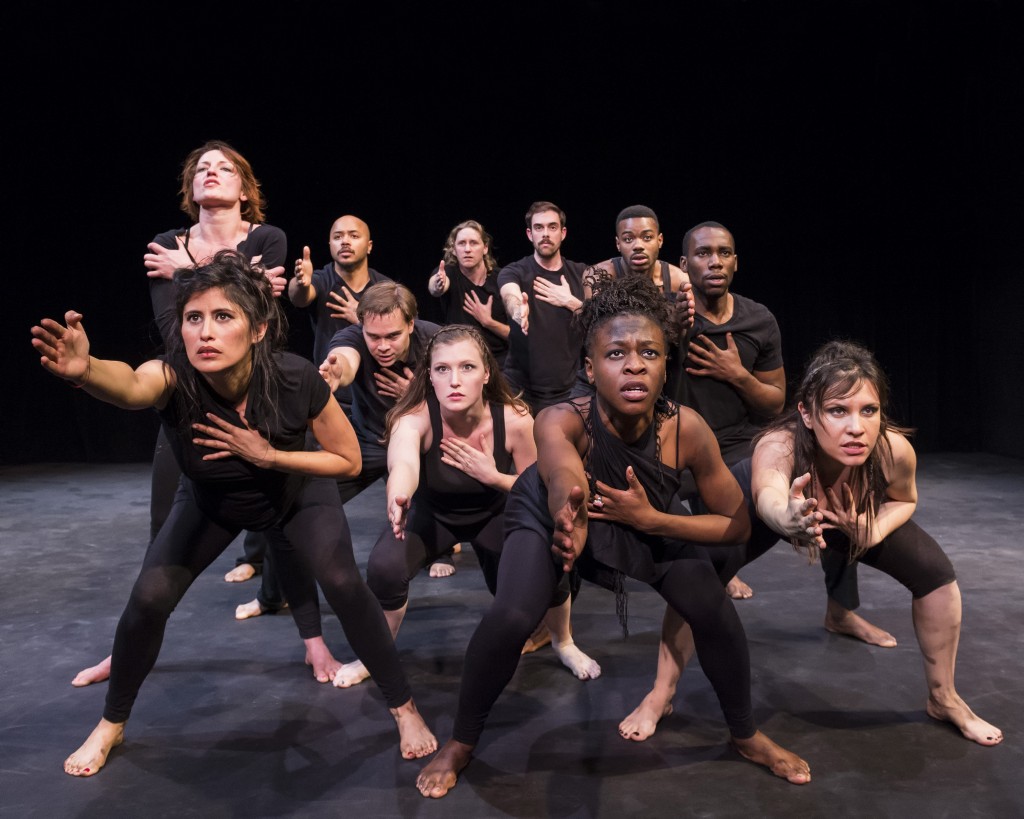
Today, an important component to bolstering the future of the School has been its focus on equity, diversity and inclusion (EDI). One of the School’s key priorities in this area includes accessibility for current and prospective students through means such as scholarships and formulating a more inclusive recruiting process.
“As social issues persist today, it is powerful for me to see that USC is prioritizing social change as a key element of its mission,” Whitaker ’82 says. “This can be seen through the [Whitaker Peace & Development Initiative]’s recent partnership with [SDA]’s Institute for Theatre & Social Change in which we’ve just begun to develop plays at our partner middle schools that focus on social justice themes. As individuals, we all have a responsibility to impact our world and stand up for the things we believe.”
This year, the School launched an office dedicated to programming that promotes dialogue, awareness and allyship, and to strengthening its efforts to create an inclusive environment for its students, alumni, faculty and staff. With the purpose of enhancing the social, academic and creative development of the entire SDA community, this office hosts workshops, trainings, events and a physical space to foster a safe community to uplift and nurture the diverse creativity of historically marginalized voices.
“I am proud of the fact that SDA enables its students to pursue both artistic excellence and the potential for our art form to contribute to necessary social change. As dean, I am very proud that we offer our students both rigor and impact, and I will look to expand and deepen this dual focus,” Dean Roxworthy says.
Dramatic Arts’ Leading Role
Anticipating and adapting to the needs of the artists and community at large have been driving forces in the development and transformation of dramatic arts at the University.
When USC opened its doors in 1880, the arts had an undeniable place on campus. In the University’s early history, courses like dramatic reading and oratory were a part of the core liberal arts curriculum. Student life encompassed opportunities such as junior and senior class plays and a Shakespeare Dramatic Club.
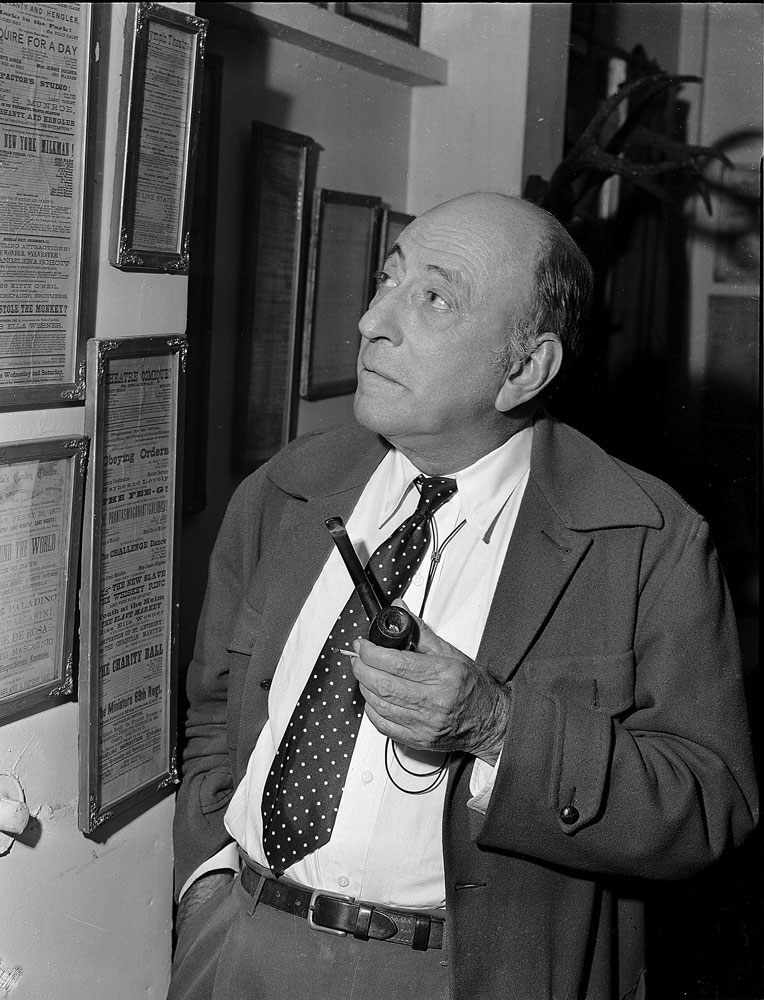
The demand of dramatic arts studies eventually led to the creation of the Department of Drama, founded in 1945 by playwright, author, producer and director William C. DeMille — also co-host of the first Academy Awards and older brother of American cinema founding father Cecil B. DeMille.
The formation of the drama department was indicative of the growing importance dramatic arts had on the University population and the vital role it had on its community. Many of the first drama students were returning World War II veterans arriving to USC on the GI Bill; and, early on, the School put the reigns of artistic expression and examination of humanity in the hands of its students through its experimental theatre workshops. The latter courses have been offered current day, providing students opportunities to be responsible for all aspects of a production, from play selection to performance.
Finding a Home
Since the University’s inception, the School has taken on many forms — from classes around USC to the Department of Drama, Division of Drama under the School of Performing Arts, School of Theatre and the current School of Dramatic Arts. And throughout these iterations, the School’s teaching, work and performance spaces have been scattered across campus. Several historical documents cite the challenges SDA faced without a central location.
With the exception of the Bing Theatre — the first and only building constructed for SDA, thanks to USC Trustee Anna Bing Arnold, back in the 1970s — the School adopted other various spaces over the decades, some of which were as obscure as an old post office on Vermont Avenue, grocery store and barn. Two theatres that no longer exist today, Stop Gap and Greenroom theatres, were located in a defunct relay station and stable, respectively.
Nevertheless, the lack of a dedicated building is near its end. Suitably, during its diamond celebration of the past, present and future, the School announced its upcoming move into a new home on campus: a redesign and renovation of a historic building, which once housed the United University Church, for the 21st century. Centered along USC’s arts corridor, the venue will allow for the facilities to meet its students and faculty at the level of their craft and embody the collaboration within a central space.

This moment signals how far the School has come since its modest beginnings. It is now ready to embark on its next chapter: an exciting journey that comprises of a new home base about to break ground, an ever-invested community of artists and supporters, and robust training programs that prepare students to take on and lead a transforming industry.
“As we look to our next 75 years, Los Angeles and Hollywood have become part of a constellation of entertainment capitals around the world and so the diverse, globalized education that SDA offers its students today is more relevant than ever before,” Dean Roxworthy says. “At the same time, what it means to be a ‘working artist’ in today’s entertainment industry, particularly for dramatic artists, involves a broader array of mediums and platforms than ever before, which is why we train students for the stage, screen and digital media.”
This article appeared in the 2021-22 issue of Callboard magazine. Read more stories from the issue online.
